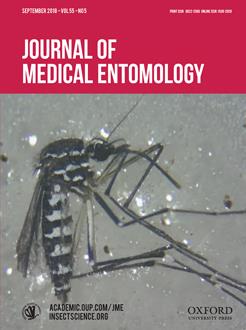Leishmaniasis is a vector-borne disease caused by the protozoan Leishmania and it is one of the six most important infectious diseases in the world.The aim of this study was to conduct a research on the fauna and most frequented ecotopes by sandflies on islands of the Paraná River. The sandflies were collected with Falcão light traps in 10 islands in the municipalities of São Pedro do Paraná, Porto Rico, and Querência do Norte, in Paraná State, Brazil, from November 2012 to November 2014. In total, 76,145 specimens of Nyssomyia neivai, the only species found, were collected, of which 63,015 were female and 13,130, male.The largest number of sandflies was collected mainly in domiciles and peridomiciles.The islands of the Paraná River showed predominance of Ny. neivai, which is largely involved in the transmission of Leishmania and a risk of human leishmaniasis to the island inhabitants and tourists.
BioOne.org will be down briefly for maintenance on 12 February 2025 between 18:00-21:00 Pacific Time US. We apologize for any inconvenience.
How to translate text using browser tools
12 June 2018
Predominance of Nyssomyia neivai (Pinto) on the Islands of the Paraná River, Southern Brazil
B. A. Santos,
K. R. Reinhold-Castro,
E. C. Cristóvão,
T. G. V. Silveira,
U. Teodoro
ACCESS THE FULL ARTICLE
It is not available for individual sale.
This article is only available to subscribers.
It is not available for individual sale.
It is not available for individual sale.

Journal of Medical Entomology
Vol. 55 • No. 5
September 2018
Vol. 55 • No. 5
September 2018
disease vectors
epidemiology
leishmaniasis
Psychodidae
zoonoses




